
Menu:
Below are some of the ongoing work in which I am actively involved with my students and collaborators.
Star-Formation Scaling Relations in Cluster Forming Clumps
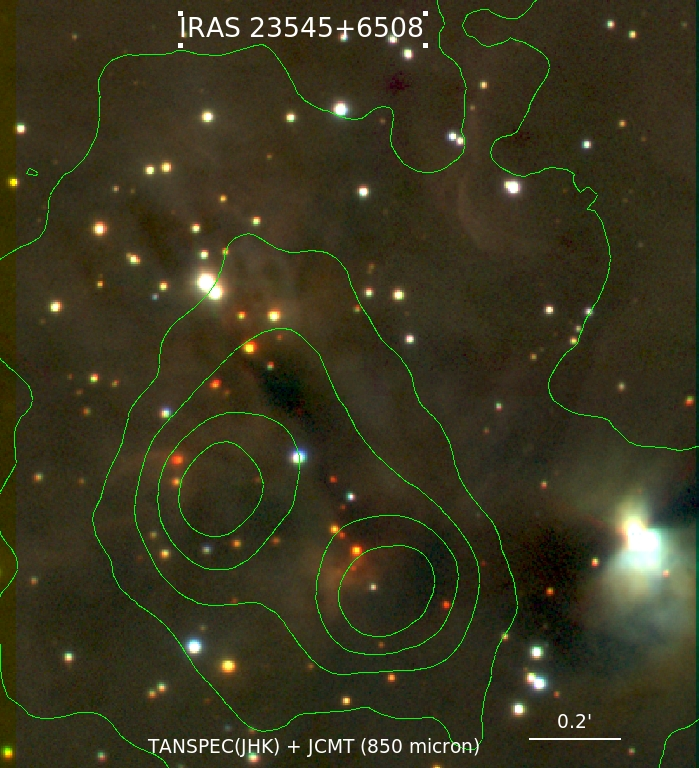 |
Near-infrared image of a star forming region taken with the TANSPEC camera mounted on the
3.6-m Devasthal optical telescope, revealing newly borned stars that are deeply embedded
in the dusty cloud shown by contours. The spatial resolution of the image ~ 0.6 arsec, while the point source
sensitvity at K-band is ~18.5 mag, four magnitude deeper than 2MASS data.
|
Evolution and Fate of Galactic Open Clusters with GAIA
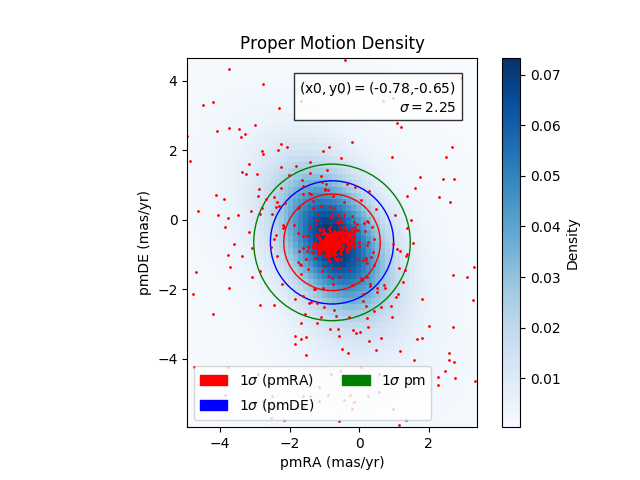 |
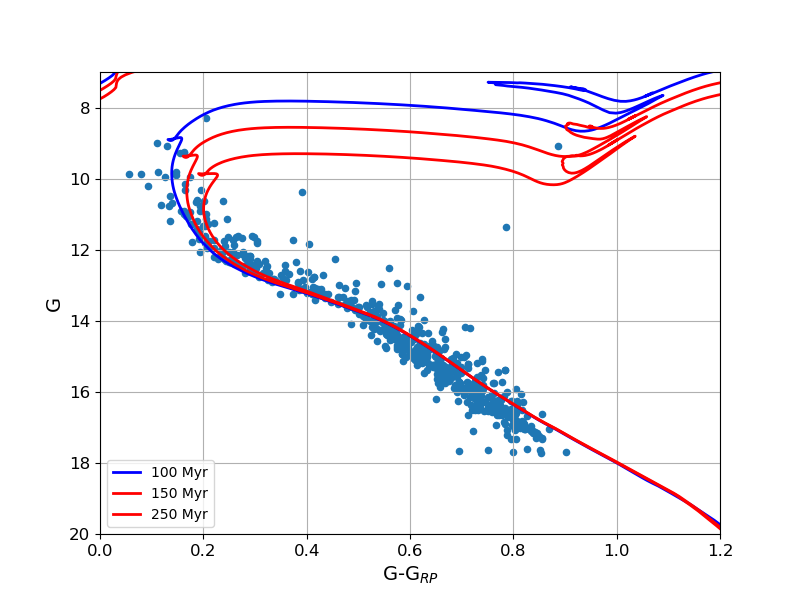 |
With proper motion and distance information of individual stars, now GAIA has opened a new avenue to
understand the properties and evolution of open star clusters in a much better way than before.
Currently, we are analyzing a set of open clusters using GAIA data to constrain their distance, age,
mass, evolutionary status, and orbit, for understaning their evolution and likely fate.
|
Sequential Star Formation in Massive Star Forming Complexes
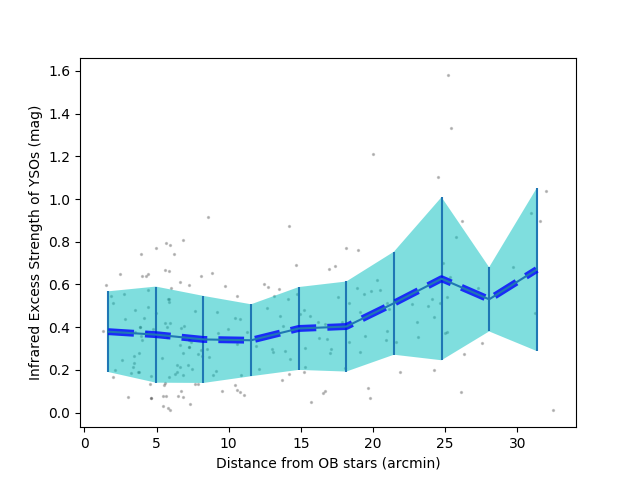 |
The theoretical model says propagating ionization fronts from HII regions can induce the next-generation star
formation in molecular clouds and this mode of star-formation can be the dominant mode in HII regions environment,
however, proving it is a difficult task in the observational point of view. Presently, we are working on an HII r
egion environment where we found clear evidence of a sequential wave of induced star formation as we progress
from the older generation OB stars to younger generation protostars located on the outskirts of the HII region.
|
Protoplanetary Disk Evolution
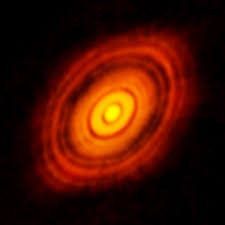 |
Embedded Class0/I phase of a YSO is the stage
where accretion activity is high; thus defines the mass-assemble
processes of a young star.Understaning accreation properties in young stars will
put constrains on several questions of star-disk interaction and cause of variability in protostars.
The study of protoplanetary disks is one of the main science drivers of ALMA, JWST and TMT.
In young stars ALMA has found structures such as gaps and rings in protoplanetary disk as predicted by theories of planet formation.
Simulations shows that the gaps are located where various molecules turn into ices and
help planet formation get started. Thus undersatnding the
processes of cicumstellar disk evolution at its early phases is very crucial to planet formation. Currently, I exploring
cicumstellar disk evolution with ALMA.
|